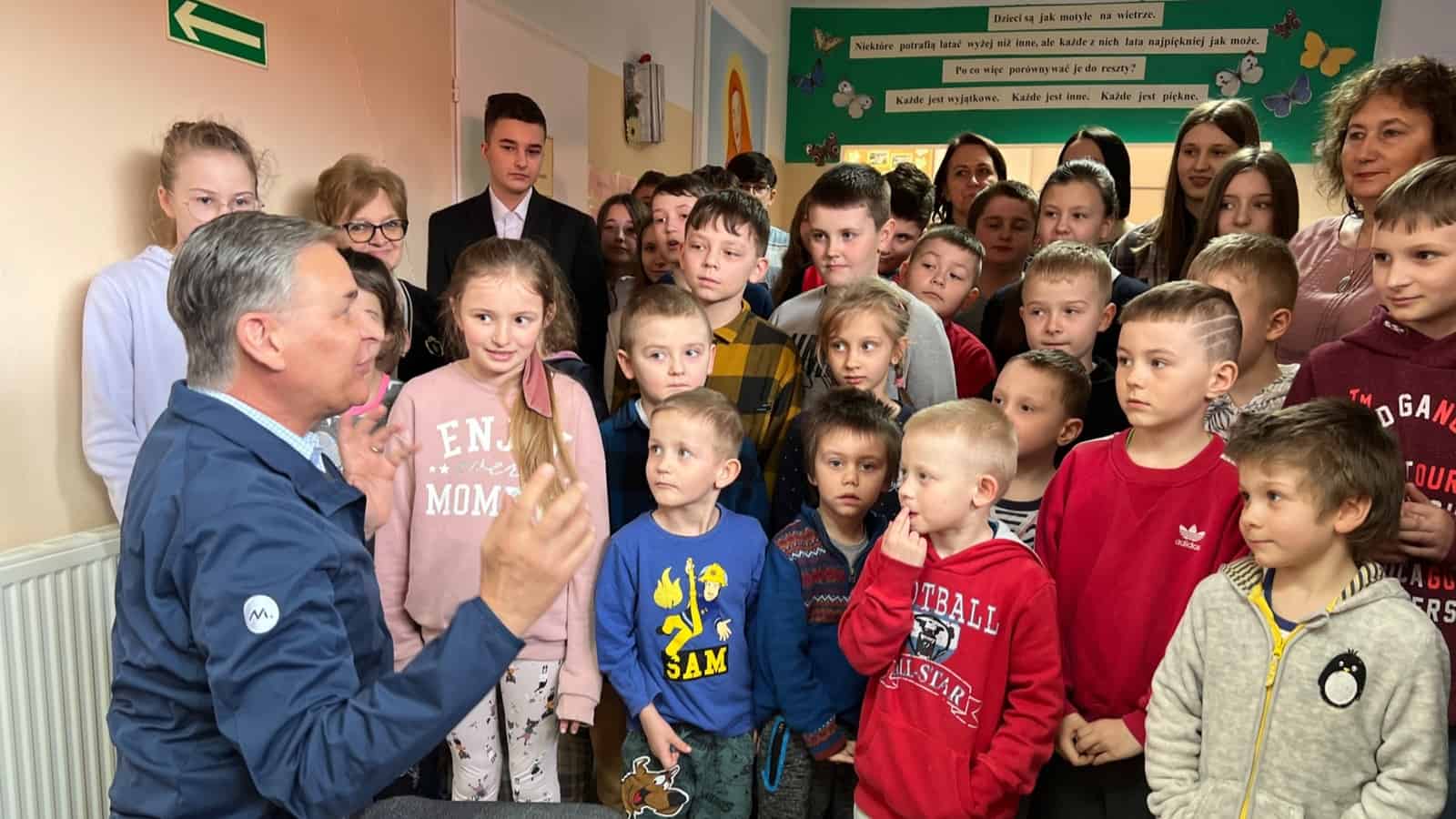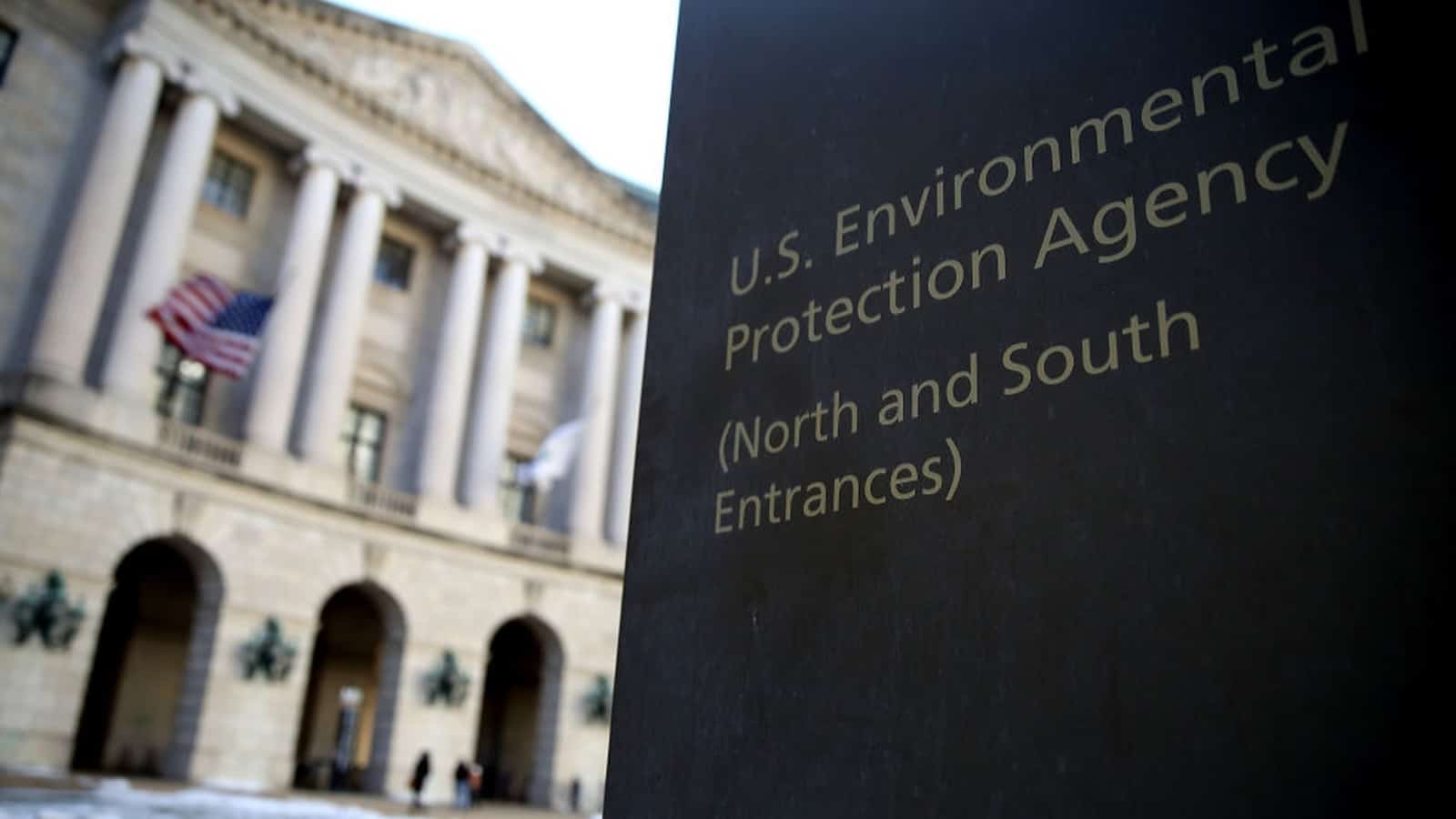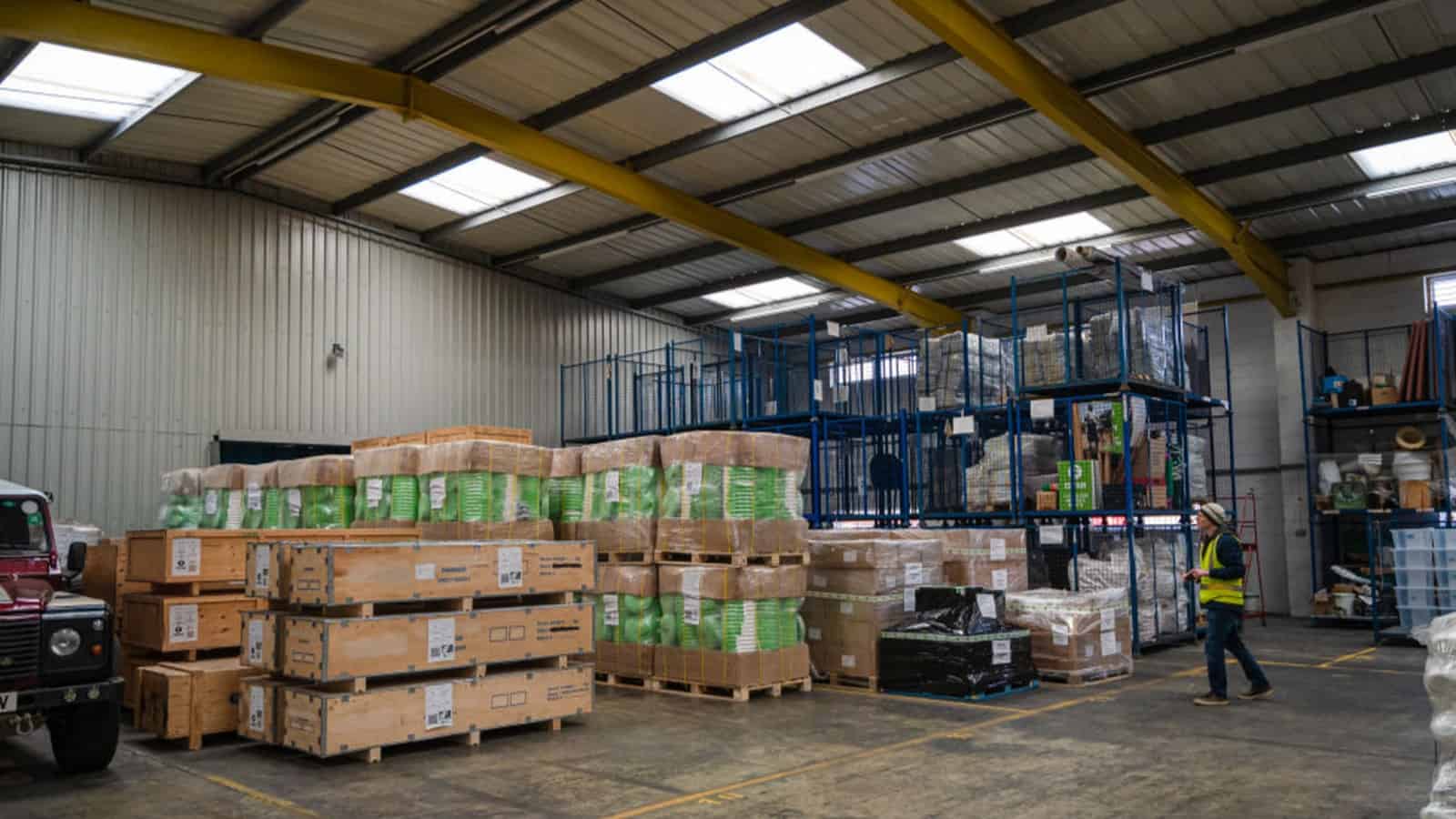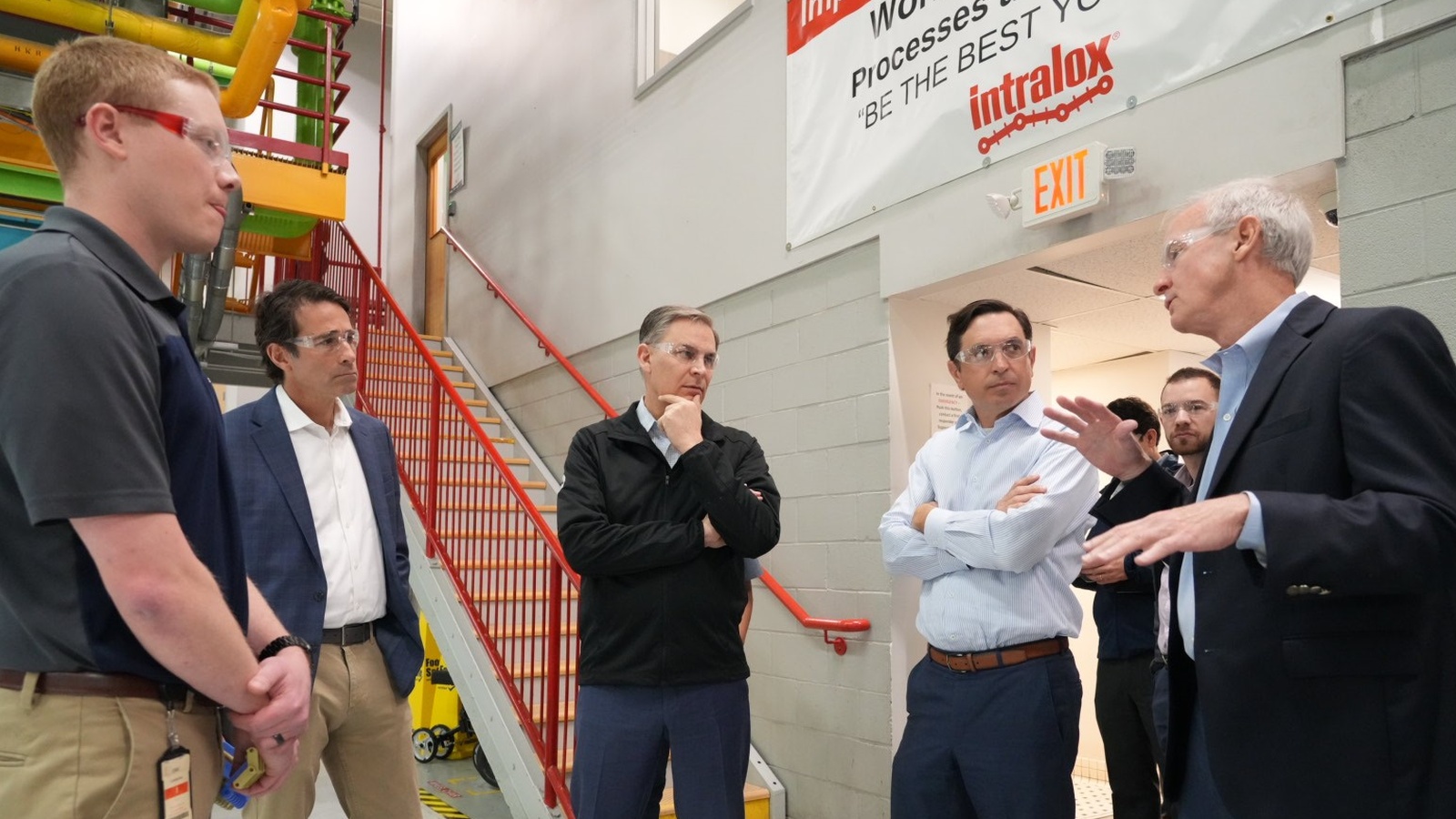China’s Slowing Economy Could Stall Global Growth

Owing to Beijing’s “Covid Zero” policy, China’s economy may be facing slowed growth that mimics a recession, according to The Wall Street Journal (subscription).
What’s happening: “Millions of new graduates are struggling to find a job. Business confidence has fallen. Imports have plummeted, and nervous Chinese are socking away more savings.”
- Purchasing manager indices released last weekend by China’s government showed contractions in factory and service-sector activity for April, the second straight month of declines.
- Also dropping are cement production, smartphone shipments and intra-country sales of excavators.
- Youth unemployment is reported at 16%.
Beyond lockdowns: Fallout from the war in Ukraine has increased costs for Chinese businesses and led to less demand for China’s exports.
- Meanwhile, “[r]eal estate, a primary driver of the nation’s economy, went into free fall last year as developers buckled under heavy debts and home sales slumped.”
Why it matters: Long-term slowdowns in China are felt internationally.
- “China was projected to account for a quarter of global economic growth in the five years through 2026, according to data released by the International Monetary Fund last year.”
How to fix it: Loosened “Covid Zero” policies, which have hamstrung supply chains and kept consumers home, would be likely to jumpstart a partial recovery, according to the Journal.
- However, “Chinese officials are pledging to get the economy back on track, without abandoning their tough Covid-control policies. President Xi Jinping … has called for an all-out campaign to rev up growth through more infrastructure spending.”
In China, Deflation Worries Grow

As most of the world grapples with inflation, China is facing deflation that could push it into “an economic trap,” according to The Wall Street Journal (subscription).
What’s going on: “Prices charged by Chinese factories that make products ranging from steel to cement to chemicals have been falling for months. Consumer prices, meanwhile, have gone flat, with prices for certain goods—including sugar, eggs, clothes and household appliances—now falling on a month-over-month basis amid weak demand.”
- China’s economy is growing, but slowly, and the government recently announced a series of stimulus programs to help.
Parallels with Japan: While most economists see China avoiding a prolonged recession, some “see alarming parallels between China’s current predicament and the experience of Japan, which struggled for years with deflation and stagnant growth” in the 1990s, following collapses in stock market and real estate value.
- If Japan’s fate were to befall China, the latter would face another hurdle: the usual methods for combating these problems would be either unpopular or toothless “due to the country’s heavy debt load.”
A mixed bag: A long period of lower prices in China could help bring down inflation elsewhere in the global economy, including the U.S.
- But … “[a] deflationary spell in China would also likely mean weaker Chinese demand for food, energy and raw materials, which big chunks of the world rely on for export earnings.”
Effects of uncertainty: And the longer that prices fall and stay down, the more entrenched deflation becomes—making debts “harder to bear and profits and incomes fall. Companies shed workers to fatten shrinking margins.”
Another Rate Increase Likely

The Federal Reserve will likely raise interest rates again in the near future, Chairman Jerome Powell said Wednesday, according to The Wall Street Journal (subscription).
What’s going on: Powell said that because the Fed lifted rates so quickly last year, the effects haven’t been fully realized yet.
- “‘Policy hasn’t been restrictive for very long … so we believe there’s more restriction coming,’ Powell said during a panel discussion with other central bankers at the European Central Bank’s annual symposium in Sintra, Portugal.”
- Core inflation will probably not reach the Fed’s target of 2% until 2025, Powell added.
The background: While central banks throughout the world have increased interest rates quickly in the past year in an effort to control inflation, they “have been astonished so far at the resilience of their economies to higher borrowing costs.”
- Earlier this month, the European Central Bank raised its rates a quarter percentage point. Last week, the Bank of England raised its key interest rate by a relatively aggressive half percentage point, citing a resilient economy, tight labor market and large pay increases for workers.
- At its meeting earlier this month, the Fed left the benchmark federal-funds rate at 5% to 5.25%, following 10 consecutive rate increases at prior meetings.
What it means: “Slowing down rate increases, including by possibly raising rates at every other meeting, represents an ‘effort to get more information from the data to see how much restraint is really coming,’ [Powell] said.”
What’s next: Most central banks—including the Bank of England—will probably raise rates again in the near future, according to the Journal.
Inflation Cooled in May

The yearly rate of inflation slowed in May to less than half of what it was at its peak last year, but it’s still far higher than the Federal Reserve’s goal, according to The Wall Street Journal (subscription).
What’s going on: Consumer prices increased 4% in May from a year earlier, marking the 11th straight month of slowdowns.
- On a monthly basis, consumer prices rose 0.1% in May, following a 0.4% increase in April.
- Core consumer prices—which exclude food and energy and are considered a better predictor of future inflation—rose 5.3% year-over-year in May, owing partly to increasing rent costs.
The good: “The U.S. economy has maintained momentum this year, staving off predictions of recession. The job market remains robust, and consumers have boosted their spending, though one measure shows economic output is falling. A possible credit crunch following the March collapse of a few regional banks could crimp the economy.”
The not so good: “While inflation has cooled significantly, higher prices for many goods and services are weighing on household spending decisions.”
What’s coming: The Fed meets today and tomorrow to determine its next steps for interest rates, which it has raised aggressively in the past year—though it probably will not raise them again this week, according to NAM Chief Economist Chad Moutray.
- The Fed “is likely to make no changes to the federal funds rate this week, but with inflation remaining more stubborn than preferred, it could hike short-term rates by 25 basis points at either or both of its July 25–26 and Sept. 19–20 meetings before hitting the pause button on rate changes,” he said.
From JFK to Mother Teresa: The Career of Snap-on CEO Nick Pinchuk

In an interview with Nick Pinchuk, you will start with JFK, meander through Ralph Waldo Emerson and the New Testament, meet Mother Teresa along the way and find out only at the end that he helped send the Viking probe to Mars. And let’s not forget another achievement: he delivered his own child in the backseat of the family car.
The Snap-on chairman and CEO, an executive committee member and stalwart supporter of the NAM, sat down for a very wide-ranging interview with NAM President and CEO Jay Timmons at the NAM’s recent board meeting, at which he received the Manufacturing Icon Award. Here are some of the highlights.
Starting with Kennedy: When asked how he got into manufacturing, Pinchuk cites Kennedy’s 1961 speech promising that the U.S. would put a man on the moon by the end of the decade. Pinchuk was one of the “millions of young people” who pursued STEM careers because Kennedy inspired them, he said.
- He then found himself shipped to Vietnam after a stint in the Reserve Officers’ Training Corps. His experience in the army later helped launch him into management at Ford, when the company was looking for someone who could “run something 24 hours a day”—just as he had in Vietnam.
- He “parlayed” that experience into a business degree, then rose fast in two other organizations—United Technologies and Carrier. His experience in Vietnam helped a second time, leading Carrier to choose him to run its Asia operations.
- Finally, Snap-on came calling, looking for someone with international experience. “On a day in which the board of directors likely had too much wine,” Pinchuk joked, “they decided to give me the CEO job.”
Read the full story here.
Timmons Finishes First Week in Europe

NAM President and CEO Jay Timmons concluded week one of the Competing to Win Tour in Europe by visiting a Polish school supported by UPS as well as a Pratt & Whitney facility, where he reflected on the role of manufacturing in protecting democracy.
The school: Timmons visited the elementary school in Lipa, Poland, which has been supported by UPS and served as a safe haven for Ukrainian refugee children at the start of the war.
- During his visit, Timmons discussed the needs of the children and met with the students and teachers in the town, which is near the Ukrainian border.
- He also met with an administrator from a sister school on the Ukrainian side of the border to discuss how the children there are faring.
“Arsenal of Democracy”: In addition, Timmons visited the Pratt & Whitney manufacturing campus in Rzeszów, which employs 5,000 workers and manufactures commercial and defense equipment.
- Timmons not only got a firsthand look at a company that is reinforcing the U.S.–EU commercial relationship, but also learned about the company’s response to the Ukrainian refugee crisis, which includes team members providing housing, aid and volunteer hours.
Visiting Auschwitz: Timmons visited the concentration camps at Auschwitz-Birkenau on Saturday and saw the horrific evidence of the atrocities committed at the site, where more than 1.1 million people perished.
- Following the visit, he warned against the dangers of authoritarianism and the importance of standing up for democracy and common values of respect and decency. He also noted, as highlighted during the Auschwitz-Birkenau tour, that businesses acquiesced or participated in mechanisms that advanced the aims of the Axis powers.
- Timmons emphasized manufacturing’s power to improve lives and protect freedom for people around the world. However, he also noted the dangers of command-and-control governments dictating the industry’s aims, citing the Holocaust and World War II as examples of how manufacturing can be used as a malevolent force.
The last word: “The American business community has an obligation to stand up for our democratic system and to hold our leaders responsible for their actions—and their rhetoric,” said Timmons.
- “Manufacturers in America, in particular, are a force for good. But we must never let our guard down or take our democracy for granted, no matter how difficult it may be to uphold what is right in the United States and around the world.”
Next up: The tour continues this week, with Timmons visiting high-level government and industry leaders in London, Brussels and Paris.
EPA Proposes PFAS Standards

The Environmental Protection Agency has proposed the first federal limits on two chemical compounds that were used widely in everyday products for decades, The Wall Street Journal (subscription) reports.
What’s going on: “The agency is proposing maximum allowable levels in the nation’s public drinking-water systems for two compounds in a class of chemicals known as perfluoroalkyl and polyfluoroalkyl substances, or PFAS, which were used for decades in carpeting, clothing, food packaging, firefighting foam and other consumer and industrial products. The EPA also said it would regulate four other PFAS chemicals by requiring treatment if the combined level reaches a certain concentration.”
- The suggested limits under the Safe Drinking Water Act are part of a larger move by the EPA to tighten rules around “forever chemicals”—so known because they take years to break down—owing to “a growing number of studies [that] have shown links to a variety of cancers, thyroid disease, high cholesterol and other issues.”
- The two individual chemicals under discussion are known as PFOA and PFOS, which various industries began using in the 1940s for their ability to resist grease, corrosion, water and stains, as well as to douse fires.
Why it’s important: While the EPA says the change would prevent numerous deaths and illnesses, not everyone is assured of the soundness of the science behind it—and others say it would cost companies unnecessarily.
- Critics of the new proposed standard say the chemicals are still necessary components of numerous products, from cell phones to medical devices, and there are no viable alternatives. Moreover, when used correctly, PFAS compounds do not pose a significant health risk to humans or the environment, they say.
- One source told the Journal the new limits “would cost water systems $40 billion” in compliance-related spending.
Our take: “Everyone deserves access to clean drinking water, and manufacturers continue to do their part to ensure we achieve the highest levels of environmental stewardship,” said NAM Director of Energy and Resources Policy Chris Morris.
- “Manufacturers in America are committed to the communities in which they live and serve and are dedicated to protecting the health, safety and vibrancy of those communities. The EPA’s proposal leaves many questions unanswered on the feasibility of meeting these new standards and the economic impacts this will have on communities, especially rural communities and consumers. The NAM looks forward to continuing to work with the EPA to ensure everyone has access to clean drinking water.”
Manufacturers Lend a Hand in Turkey, Syria

It’s been nearly a month since a devastating earthquake hit Turkey and Syria, killing at least 50,000 people—but manufacturers haven’t stopped lending a hand.
What’s going on: Through NAM Emergency Response Committee partners Project HOPE and Good 360, as well as other avenues, manufacturers in the U.S. were among the first to offer supplies and services to survivors. Here is just a sampling of the aid they provided.
Transport help: Manufacturers in the logistics sector stepped up to help ship necessary goods and supplies.
- The UPS Foundation has committed $1 million in global logistics support and employee-contributions matches.
- FedEx has committed more than $1 million of in-kind shipping so far.
Funds: Others are giving sizable monetary donations to the relief efforts.
- The Caterpillar Foundation is donating $400,000 to support relief efforts.
- Boeing Charitable Trust is giving a $500,000 donation.
- Novartis is donating $1 million.
- Rockwell Automation is donating $50,000 to the American Red Cross.
- Siemens has donated more than $1 million.
Supplies: Many manufacturers have also been donating much-needed goods to the earthquake victims.
- In addition to donating $1.2 million, the PepsiCo Foundation has partnered with nonprofits Tider and Ahbap to deliver essentials, including food, water, sanitation and hygiene products, along with container shelters, blankets and other emergency supplies.
- The Kraft Heinz Foundation is sending food and care products and donating $500,000 to the Red Cross.
- The Abbott Fund has committed $1.5 million in grants and product donations.
How to help: If you’d like to help those in need in Turkey and Syria, the NAM Emergency Response Committee offers options:
- To donate needed products—including hygiene kits, cold-weather clothing or health supplies—please visit Good360’s goods-donation page.
- If you want to give funds to support humanitarian relief, you can do so via the NAM’s partnership with Project HOPE.
Share your story: The NAM Emergency Response Committee is looking to hear from manufacturers about how they may have been affected by the earthquake and how they may be helping. To share your stories, please contact the NAM Emergency Response Committee at [email protected].
“Competing to Win” Comes to Louisiana

Few things are more quintessentially Louisianan than seafood and Tabasco sauce, and on the third stop of the NAM’s Competing to Win Tour on Thursday, NAM President and CEO Jay Timmons got to spend some time with both.
The first stop: Laitram LLC, the Harahan, Louisiana–based manufacturing leader in seafood and nuts processing equipment, played host to Timmons, Louisiana Rep. Garret Graves (recently tapped by House Speaker Kevin McCarthy as Elected Leadership Committee chair) and Louisiana Association of Business and Industry President and CEO Stephen Waguespack.
- Laitram President and CEO Jay Lapeyre (who also serves as chairman of the Cato Institute Board of Directors) and his team led the group through a facility tour of Intralox, a subsidiary of Laitram specializing in conveyer belts and equipment that improve productivity, food safety and reliability in high-speed package sorting.
- Timmons, Rep. Graves and Waguespack spoke with line employees across the facility, and Timmons was impressed by the company’s successes in employee retention: “Nearly everyone I met had been there a decade or more … One team member recently marked 46 years with the company,” he noted afterward.
Talking policy: Timmons moderated a roundtable discussion on manufacturing policy opportunities and challenges with Laitram’s senior staff, Rep. Graves and Waguespack after the tour.
- Lapeyre and his team expressed concerns about pass-through tax rates, which impact Laitram given that it is an S-Corp. They also raised alarms about the recent phaseout of pro-growth tax deductions for research and development and bonus depreciation.
- Trade emerged as a top priority for Laitram and its global enterprise, and Lapeyre also shared his perspective on the need for more regulatory certainty, particularly in the light of a potential new rule from the Federal Trade Commission limiting the use of noncompete agreements.
- Meanwhile, Rep. Graves emphasized the continued importance of protecting tax reform and pointed to ongoing efforts in Congress to advance permitting reform.
The second stop: The NAM team then headed to Avery Island, about two hours outside of New Orleans, where they visited McIlhenny Company, the maker of the iconic red-and-green-bottled Tabasco pepper sauce.
- Timmons was given a full tour of the 155-year-old company’s facilities, which included stops at the manufacturer’s barrel-aging warehouse, blending facility, bottling and packing plant and its onsite restaurant.
- McIlhenny Chief Operating Officer Michael Terrell—a fourth-generation employee of the company—and Agricultural Manager Christian Brown—a sixth-generation employee—guided the tour around the facility, which showed off some of the manufacturer’s recent bottling-plant innovations. These included label readers, case packers and a packet line, as well as several sustainability initiatives.
The last word: As Timmons said at the outset of the competitiveness tour, “The story of manufacturing in America is one of resilience and defying the odds. All manufacturers ask is that in Washington, when it comes to policy, don’t stack those odds against us.”
NAM to Congress: Reverse Course on Harmful Tax Changes

Recent tax law changes that increase the costs of research, machinery purchases and key business investments will harm manufacturers “at a time when 62% of manufacturing leaders already expect a recession in 2023,” the NAM told congressional leaders Monday.
What’s going on: Beginning in 2022, businesses that had for decades been allowed to immediately deduct research and development expenses had to begin amortizing these costs over years, making innovation more expensive.
Why it’s important: The change creates a competitive disadvantage for manufacturers in the U.S., as “China, which has made no secret of its ambition to become the world leader in advanced manufacturing, currently provides a 200% deduction for R&D expenses for manufacturers,” NAM Senior Vice President of Policy and Government Relations Aric Newhouse told the Senate Finance Committee and the House Ways and Means Committee.
What can be done: Congress should reverse course to avoid harming manufacturers, Newhouse said. Here’s what lawmakers should do:
- Reverse the R&D amortization provision: Policymakers should allow manufacturers to go back to being able to deduct 100% of their R&D expenses in the same year in which they are incurred.
- Protect interest deductibility: Congress must reverse the new, stricter limit on interest deductibility (the earnings before interest and tax, or EBIT, standard) and return to the “standard in place prior to 2022, which was based on earnings before interest, tax, depreciation and amortization.”
- Return to full expensing: Lawmakers should go back to allowing businesses to take 100% deductions for equipment and machinery purchases in the tax year of purchase.
The last word: By making these changes, Newhouse said, “Congress can help ensure that manufacturers, especially small manufacturers, can continue to invest in their operations, their workers and America’s future.”